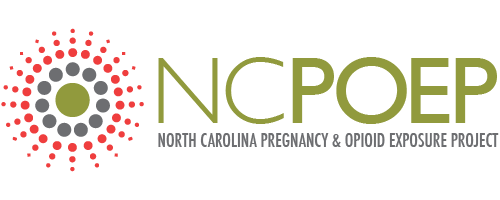Many strong reasons exist for helping women who are struggling with substance use disorders to connect with treatment. Consider the following reasons to connect women to treatment:
- Treatment can prevent a substance-exposed pregnancy
The earlier in the pregnancy a woman can be connected to treatment, the less impact her substance use will have on the development of the baby.[1]
- Treatment can improve birth outcomes[2]
Overwhelming evidence shows that women who engaged in substance-use disorder treatment had better birth outcomes, defined by higher birth weight, full-term births, and lower infant mortality.
- Treatment makes a difference.[3]
![Figure 1. Outcomes of Participants in Pregnant and Post-partum Women’s and Residential Treatment Programs Nationwide. Adapted from Caliber Associates(2003)<sup><a href="#_ftn3" name="_ftnref3">[3]</a></sup>](/wp-content/uploads/2015/02/section04_chart_01.png)
Figure 1. Outcomes of Participants in Pregnant and Post-partum Women’s and Residential Treatment Programs Nationwide. Adapted from Caliber Associates(2003)[3]
- Treatment can improve the quality of life for women and their families.
In cases of out-of-home placement of children, the mother’s treatment for substance-use disorders is linked to increases in mother-child reunification.[4]
- Treatment can lead to recovery: People do recover from substance-use disorders.
Recovery is “…a process of change through which individuals improve their health and wellness, live a self-directed life, and strive to reach their full potential.”[5]
- Treatment is cost-effective; researchers have determined that treatment saves $7 for every $1 spent.[6]
- Treatment for substance-use disorders has been shown to have efficacy similar to that of treatment regimens for other chronic illnesses. Rates of returning to pre-treatment status are the same as other chronic illnesses such as type I diabetes, hypertension, and asthma.[7]
References
[1] American College of Obstetricians and Gynecologists. (2008). At risk drinking and illicit drug use: Ethical issues in obstetric and gynecologic practice. ACOG Committee Opinion No.422. Obstetrics & Gynecology. Retrieved from http://www.acog.org/Resources-And-Publications/Committee-Opinions/Committee-on-Ethics/At-Risk-Drinking-and-Illicit-Drug-Use-Ethical-Issues-in-Obstetric-and-Gynecologic-Practice
[2] Ashley, O.S. Marsden, M. E., & Brady, T. M. (2003). Effectiveness of substance abuse treatment programming for women: A review. American Journal of Drug and Alcohol Abuse, 29(1), 19-53. http://dx.doi.org/10.1081/ADA-120018838
[4] Grella, C, Needell, B., Shi,Y, Hser, Y. Do drug treatment services predict reunification outcomes of mothers and their children in child welfare? Journal of Substance Abuse Treatment 36, 2009, 278-293. doi:10.1016/j.jsat.2008.06.010
[5]Substance Abuse and Mental Health Services Administration. (2012). SAMHSA’s working definition of recovery: 10 guiding principles of recovery. Retrieved from https://store.samhsa.gov/shin/content/PEP12-RECDEF/PEP12-RECDEF.pdf
[6] Ettner, S. L., D. Huang, Evans, E., Ash, D. R., Hardy, M., Jourabchi, M., & Hser, Y-I. (2006). Benefit-cost in the California treatment outcome project: Does substance abuse treatment “pay for itself”? Health Services Research, 41(1), 192-213. http://dx.doi.org/10.1111/j.1475-6773.2005.00466.x
[7] McLellan, T. Lewis, D.,et al. (2000). Drug dependence, a chronic medical illness: Implications for treatment, insurance, and outcomes evaluation. Journal of the American Medical Association, 284, 1689-1695. http://dx.doi.org/10.1001/jama.284.13.1689
|
![Figure 1. Outcomes of Participants in Pregnant and Post-partum Women’s and Residential Treatment Programs Nationwide. Adapted from Caliber Associates(2003)<sup><a href="#_ftn3" name="_ftnref3">[3]</a></sup>](/wp-content/uploads/2015/02/section04_chart_01.png)



